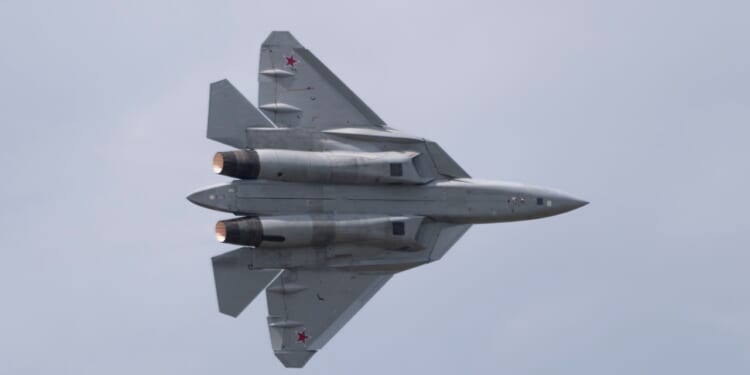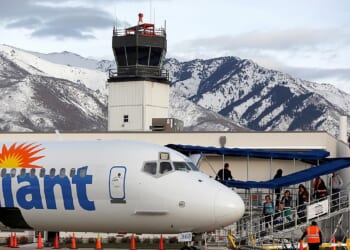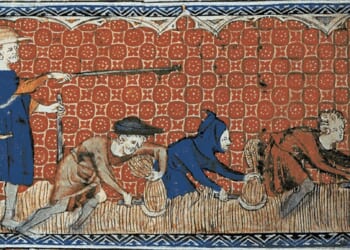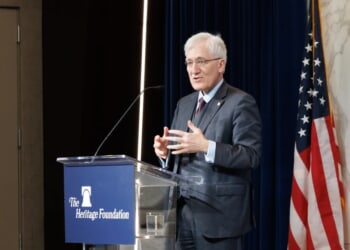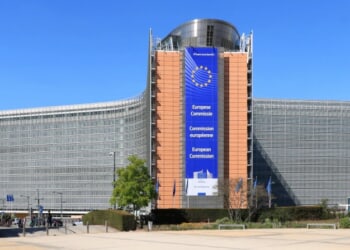The Sukhoi Su-57’s impressive design shows that the problem with Russia’s aerospace industry is not its talented engineers, but its antiquated manufacturing process.
While the Russian aerospace industry is capable of fielding impressive one-off aircraft, like the Su-57 Felon, the country’s sustained production rate is glacial relative to the United States and China. Despite the Soviet Union’s history of mass-producing capable aircraft like the Su-27 fighter or the Il-76 transport, Russia’s modern programs struggle to deliver more than a handful of aircraft each year. The reasons fall to a combination of history, economics, and technology.
Russia’s Aerospace Industry Collapsed with the USSR
After the Soviet Union disintegrated in the early 1990s, many of the nation’s aerospace plants and design bureaus were left without funding—leading to the consolidation of the aerospace sector into giant state-owned conglomerates, like the United Aircraft Corporation (UAC). While this trend preserved some capabilities, it also created enormous bureaucratic inefficiencies. At the same time production facilities grew outdated, Russia’s workers did as well; the Soviet Union once trained vast numbers of engineers and technicians, but after the Cold War, those training pipelines dried up, leaving much of the once-skilled work base retired.
Despite its claims of independence, Russia is dependent on foreign components for aircraft development. Historically, Russian aircraft programs have relied on imported electronic, avionics, and specialized materials from the West—leaving the country vulnerable to supply shocks from international sanctions. This nightmare scenario took place in 2014, when the West imposed heavy sanctions following Russia’s invasion and annexation of Crimea, and again in 2022 after the full-scale invasion of Ukraine—effectively cutting Russia off from much of the foreign components that were needed to complete indigenous aircraft.
The sanctions have also affected Russia’s supply chains and financing. Aside from blocking high-tech imports, the sanctions also serve to complicate global partnerships, limit access to capital, and restrict Russia’s ability to buy equipment or materials abroad. Basically, Russia has become a pariah in the eyes of the West, meaning fewer nations will collaborate with Moscow, for fear of drawing Washington’s ire.
Russia’s Aircraft Production Is Still Technologically Backward
But even without sanctions, Russia has long had trouble with scaling up serial production. The country lacks the modern automated assembly lines that one might find at Boeing or Lockheed Martin, increasing industrial efficiency. Russia sits far behind the US or China in terms of advanced digital design and modern manufacturing techniques, like automated robots and additive manufacturing. The result is that the US and China can prototype, test, and scale aircraft far more quickly than Russia—whose technicians still often still build their aircraft by hand, which of course is slower and less consistent than modern manufacturing techniques.
Consider the Su-57 stealth fighter, Russia’s first fifth-generation aircraft, and an answer to the American F-22. The Su-57’s impressive first flight took place in 2010—demonstrating that the problem with Russian industry was not the engineers, who clearly remain among the finest in the world. Yet only a handful of Su-57s have entered service since the type debuted, showing that the bottleneck exists where blueprints are translated into hundreds of reliable airframes.
The poor state of the Russian economy does not help matters. Although Russia spends heavily on defense relative to its GDP, the Russian economy is far smaller than that of the United States or China. And with the war in Ukraine consuming massive amounts of money, manpower, and materials, Russia’s economic ability to expand aerospace production is limited.
About the Author: Harrison Kass
Harrison Kass is a senior defense and national security writer at The National Interest. Kass is an attorney and former political candidate who joined the US Air Force as a pilot trainee before being medically discharged. He focuses on military strategy, aerospace, and global security affairs. He holds a JD from the University of Oregon and a master’s in Global Journalism and International Relations from NYU.
Image: Shutterstock / aarows.

